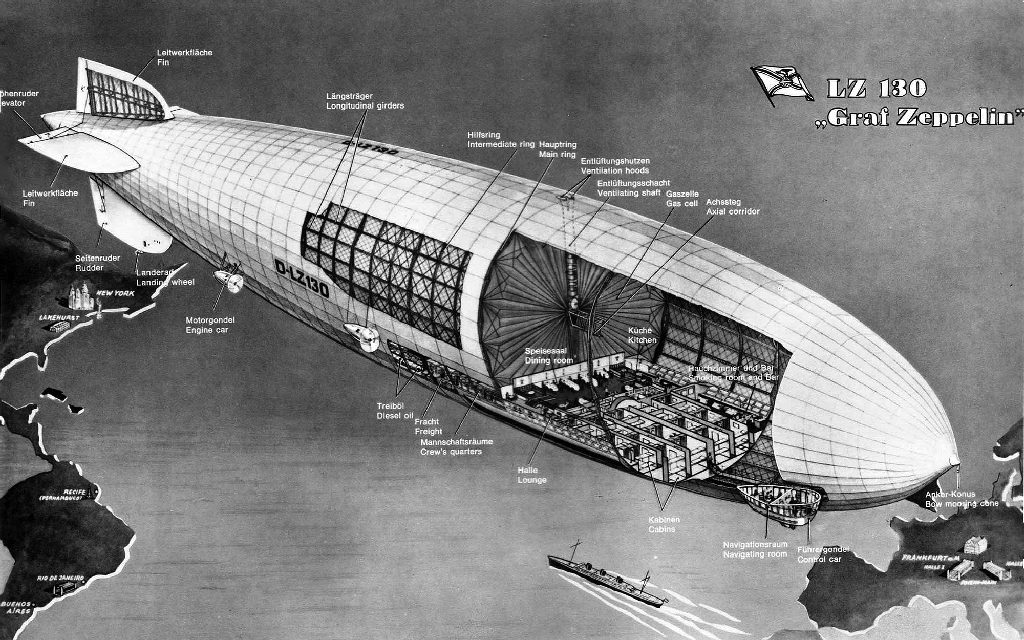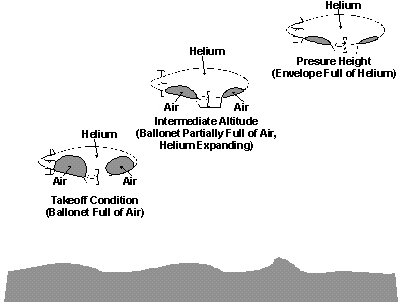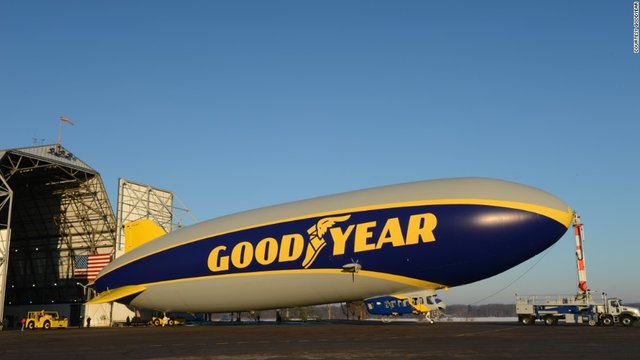Airships
Most of us have heard of airships and dirigibles, also commonly referred to as blimps or Zeppelins.
The words dirigible and airship can be used interchangeably as they mean the same. They refer to any motorized aircraft that rely on a lighter-than-air gas (helium or hydrogen) for lift, thus both blimps and Zeppelins are dirigibles or airships. However, there is a striking difference between Zeppelins and Blimps.
The difference between a Zeppelin and a blimp is that a Zeppelin is a rigid or semi-rigid airship specifically made by the Zeppelin company, while a blimp is a general term for any non-rigid airship. It's important to note that not all rigid airships are Zeppelins, but all Zeppelins are rigid or semi-rigid airships.
Rigid Airships
As the name implies, a rigid airship, of which the most famous type are the Zeppelins, has a rigid internal frame inside the hull, the vast section that gives a Zeppelin its classical, elongated, streamlined look. This frame is covered with strong fabric.
Inside the frame are multiple gasbags with a lighter-than-air gas inside of them to provide the lift of the airship, traditionally hydrogen or helium. Due to the rigid structure, the passenger and crew compartments are also located in the hull.
Lets take a look at the following drawing of the LZ 130 Graf Zeppelin II rigid airship, which was the successor to the famous Hindenburg Zeppelin airship. Size wise, it was identical to the Hindenburg, having a length of 245 meters. You can clearly see the rigid internal frame inside the hull, consisting of metal girders and wire. You can also see the passenger area, the captain's gondola, crew's quarters, and various corridors throughout the length of the ship.

Below is an image of the Hindenburg Zeppelin airship just after landing. This was always a huge task and required lots of ground-crew combined with good weather conditions. The stripes on the hull caused by the rigid frame are clearly visible.

Non-rigid Airships (Blimps)
Contrary to Zeppelins, a blimp is an airship that does not have an internal metal frame inside of the hull, thus it is a non-rigid airship. Blimps are much smaller than rigid airships. When deflated, the envelope - as the inflated section of a blimp is called - can be folded up, stored and transported. Inside the blimps envelope are two ballonets, one in the front and in the back. These can be deflated and inflated with normal air during flight to make the airship nose heavy, tail light - or vice versa - for landing and taking off. They are also needed to allow the gasbag to expand or to be reduced in size according to the temperature and air pressure of the surrounding environment depending on the altitude.

The Goodyear "Spirit of Innovation" is one of the most famous blimps. As you can see, there are no elongated lines on the complete length of the envelope indicating a rigid frame inside. This type is set to retire in 2017.

Semi-rigid Airships
As of 2017, Goodyear will replace its outdated blimps with a new type of airship, which is not a blimp but neither a fully rigid airship. Instead, it's a semi-rigid airship, as it partly combines an internal frame of a rigid with the internal gas pressure and internal ballonets of a blimp for maintaining its shape. Thus it is effectively a hybrid between a rigid airship and a non-rigid airship.
Their new model is called the Zeppelin NT, as they are produced by the Zeppelin company in Germany. However, it is important to note that Goodyear still prefers to call them blimps, because of the iconic brand and image associated with words "Goodyear Blimp".

I hope you enjoyed this explanation of the differences between various types of airships. Any comments or further questions are kindly appreciated.
Image sources:
LZ 130 Graf Zeppelin II: airships.net
Hindenburg: NBC News
Ballonets explanation: Scielo
Goodyear "Spirit of Innovation": Wikipedia
Goodyear "Wingfoot One": CNN
Knowledge inserted into my brain. :D
Downvoting a post can decrease pending rewards and make it less visible. Common reasons:
Submit
You said the Graf Zeppelin was the successor to the Hindenburg. It was the precursor. And in my opinion, in many ways superior. I never understood the "bigger is better" mantra of airship design back then. Especially as the altimeter hadn't been invented yet.
Downvoting a post can decrease pending rewards and make it less visible. Common reasons:
Submit